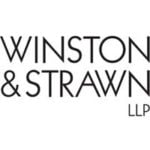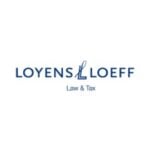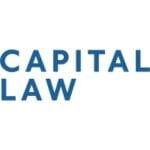-
Please briefly describe the regulatory framework and landscape of both equity and debt capital market in your jurisdiction, including the major regimes, regulators and authorities.
Equity and debt capital markets in Australia are regulated by the Australian Securities and Investments Commission (ASIC) and the Australian Securities Exchange (ASX). Debt capital markets are also regulated by the Australian Prudential Regulation Authority (APRA). In addition, certain transactions involving issuers of equity and debt securities in Australia are also regulated by the Takeovers Panel, the Australian Competition and Consumer Commission (ACCC) and the Foreign Investment Review Board (FIRB).
The table below provides an overview of these regulators, the legislative or regulatory regimes they enforce and the general scope of these regimes.
Regulator / Authority Scope Legislative / regulatory regime Australian Securities and Investments Commission ASIC regulates the conduct of Australian companies, financial markets, financial services organisations and professionals who deal in and advise on investments, superannuation, insurance, deposit taking and credit. Corporations Act 2001 (Cth) (Corporations Act) Australian Securities Exchange ASX is Australia’s primary securities exchange. It is an integrated exchange offering listings, trading, clearing, settlement, technical and information services, technology, data and other post-trade services. It acts as a market operator, clearing house and payments system facilitator. ASX Listing Rules The ASX Listing Rules are also enforceable against entities and their associates under the Corporations Act.
Takeovers Panel The Takeovers Panel is a peer review body that regulates corporate control transactions in widely held Australian entities, primarily by resolution of takeover disputes. Corporations Act Australian Competition and Consumer Commission The ACCC is an independent Commonwealth statutory authority that enforces the CCA and other legislation promoting competition and fair trading, protecting customers and small businesses and regulating national infrastructure. Competition and Consumer Act 2010 (CCA) A new mandatory merger notification regime will come into effect on 1 January 2026 and come within the scope of ACCC regulation..
Foreign Investment Review Board FIRB is a non-statutory body established to advise the Treasurer and the Australian Government on Australia’s Foreign Investment Policy (the Policy) and its administration. One of FIRB’s key roles is to examine proposed investments in Australia that are subject to FATA (and supporting legislation) and covered by the Policy, and to make recommendations to the Treasurer and other Treasury portfolio ministers on these proposals.
Foreign Acquisitions and Takeovers Act 1975 (Cth) (FATA) Australian Prudential Regulation Authority APRA oversees banks, credit unions, building societies, general insurance and reinsurance companies, life insurance, friendly societies and most members of the superannuation industry. Its key priority is to establish and enforce prudential standards and practices designed to ensure that financial promises made by supervised institutions are met within a stable, efficient and competitive financial system. Various, including the Banking Act 1959 (Cth), Insurance Act 1973 (Cth), Life Insurance Act 1995 (Cth), Private Health Insurance (Prudential Supervision) Act 2015 (Cth) and the Superannuation Industry (Supervision) Act 1993 (Cth). In general, an entity must not offer securities or financial products for issue or sale to persons in Australia without a disclosure document (such as a prospectus) that complies with the requirements of Chapter 6D of the Corporations Act and which is lodged with ASIC, unless an exception applies.
In addition to the requirement to issue and lodge a disclosure document, an issuer of debt securities may also need to satisfy requirements under other sections of the Corporations Act. For example:
- issuers offering debentures will need to satisfy the requirements of debentures in Chapter 2L of the Corporations Act;
- unless the offering excludes offers to retail investors, an offer of debt securities will generally need to satisfy the requirements in Chapter 7 of the Corporations Act (Financial services and markets) as debt securities are typically classified as both a “debenture” under Chapter 6D of the Corporations Act and a “financial product” under Chapter 7 of the Corporations Act; and
- an issuer of debt securities may also be required under Chapter 7 of the Corporations Act to hold an Australian financial services licence before it can offer debt securities.
The disclosure requirements under the Corporations Act apply to any entity seeking to raise funds in Australia, regardless of whether the entity is incorporated in Australia.
-
Please briefly describe the common exemptions for securities offerings without prospectus and/or regulatory registration in your market.
There are a number of exemptions from the requirement to issue and lodge with ASIC a disclosure document (such as a prospectus) for the issue or sale of securities in Australia. Those exceptions are set out in sections 708, 708A and 708AA of the Corporations Act.
The most commonly relied on exemptions for capital raisings in Australia are the exemptions for offers made to “sophisticated” and “professional” investors (on the basis that they are presumed not to need disclosure due to their financial capacity, experience or association with the issuer). The exemption for sophisticated investors applies where the amount payable for the securities (when combined with any amounts previously paid by that person for the entity’s securities of the same class) is at least A$500,000, or alternatively, if the person to whom the offer is made has prescribed net assets of at least A$2.5 million or has a gross income for each of the last two financial years of at least A$250,000 a year. The exemption for professional investors applies to certain types of investors including a person who carries on a business of investment in financial products, superannuation funds, certain holders of Australian Financial Services Licenses and a person who has or controls gross assets of at least A$10 million.
Another commonly used exemption is for small scale offerings of securities and certain financial products,1 sometimes referred to as the “20 in 12” rule, which permits companies to issue securities to a maximum of 20 investors in a 12-month period with a maximum value of A$2 million (in aggregate) without the need to issue a disclosure document.
There are other exemptions that can be relied on such as offers to ‘people associated with’ the company such as to senior managers of the company under a dividend reinvestment plan or share purchase plan, offers where no money or other form of payment is payable for the securities, and offers under a scheme of arrangement or takeover (where Chapter 5.1 and Chapter 6 of the Corporations Act will instead respectively apply).
Further to the above, in 2022, the Corporations Act was updated to incorporate the exemption regime for offers of securities under a company’s employee share scheme (ESS Regime) rather than the regime being dealt with separately under ASIC class order relief instruments. The ESS Regime provides that where securities are offered under a plan for no consideration, minimal disclosure requirements apply. However, where securities are offered under an employee share scheme for monetary consideration, then:
- the offer documents provided to participants must contain certain disclosures relating to the terms, risks and application procedure for the offer noting that different disclosures may be required depending on whether the company is listed or unlisted;
- the company will be subject to a cap on the number of securities it may offer in any 12 month period under its employee share schemes, which varies from 5% of the issued share capital for listed companies to 20% for unlisted companies; and
- participants who acquire securities in an unlisted company for monetary consideration are also subject to a monetary cap of (generally speaking) A$30,000 payable by the participant in any 12 month period for securities under a company’s employee share scheme (although this cap can be accrued for option plans over a 5-year period up to a maximum cap of A$150,000).
If the company is listed on the ASX, a very commonly relied on exception to the disclosure document requirement is the ‘low doc’ regime under section708AA of the Corporations Act. Provided certain conditions are satisfied, an ASX listed company may undertake a rights issue to existing shareholders without a disclosure document and may alternatively issue a cleansing statement on the ASX that discloses any information that has previously been withheld from disclosure in reliance on exceptions to the company’s continuous disclosure obligations.
Australian-based start-ups or small to medium-sized companies may also raise capital by way of crowd-sourced funding (CSF) without needing to issue a disclosure document. Instead, offers for securities are made on a third-party CSF platform via a less onerous CSF offer document. The CSF regime with its reduced regulatory requirements and the use of a licensed CSF intermediary’s platform aims to facilitate flexible and low-cost access to capital for small to medium-sized unlisted public and proprietary companies with less than A$25 million in assets and annual turnover. When considering the CSF regime as a funding option, it is important to note the CSF regime is limited and capped in multiple ways to ensure the regime is used for its intended purposes. For example, there is an issuer cap where only up to A$5 million is able to be raised in any 12-month period and an investor cap where retail investors are only able to invest up to A$10,000 per company in any 12 month period.
Footnote(s):
1 S708(1) and s1012E(2) of the Corporations Act
-
Please describe the insider trading regulations and describe what a public company would generally do to prevent any violation of such regulations.
Insider trading in Australia is prohibited under the Corporations Act and also under the Criminal Code Act 1995 (Cth) (Criminal Code). Section 1043A of the Corporations Act prohibits a person that has any inside information relating to a company, from:
- trading the company’s securities;
- advising or procuring another person to trade in the company’s securities; or
- passing on inside information to someone else knowing (or having ought reasonably known) that the other person will, or is likely to, use that information to trade in, or procure someone else to trade in, the company’s securities.
Inside information refers to information that is not generally available and if it were generally available, a reasonable person would expect it to have a material effect on the price or value of the company’s securities or on a decision to buy or sell the company’s securities.
To mitigate the risk of insider trading, ASX listed companies are required to have a securities trading policy that sets out guidelines and procedures for employees, directors, and other insiders to follow if they wish to trade their securities in the company. A typical securities trading policy for an ASX listed company requires certain individuals such as directors and senior executives to seek clearance before trading in the company’s securities with such clearance typically only provided after the insider provides confirmation that they do not possess any inside information at that time. The policy also restricts insiders from trading in the company’s securities during certain blackout periods such as shortly before release of the company’s financial results when it is more likely that insiders will be in possession of inside information that has not yet been publicly released. Public companies may also impose ad hoc blackout periods to prohibit short-term trading in its securities where there may be circumstances that insiders may have access to inside information outside the standard blackout periods.
A breach of the insider trading provisions can attract significant criminal and civil penalties. The Criminal Code reinforces the prohibition on insider trading set out in the Corporations Act and imposes criminal sanctions for those who breach the prohibition, including significant fines and imprisonment for individuals who are found guilty of such offenses. ASIC may opt to pursue either civil penalties or criminal penalties.
There are certain exceptions to the insider trading prohibitions under the Corporations Act, including an exception for officers or agents of body corporate, underwriters, Chinese wall arrangements and an acquisition of financial products pursuant to a legal requirement.
-
What are the key remedies available to shareholders of public companies / debt securities holders in your market?
The key remedies available to shareholders of public companies in Australia are briefly noted below:
- Claim for oppression – if the conduct of a company’s affairs has been oppressive to, unfairly prejudicial to, or unfairly discriminatory against a current or former member of the company, the member may apply for an order from the Court under sections 232 and 233 of the Corporations Act requiring the company to remedy the conduct.
- Claim to the Takeovers Panel – a securityholder of a public company that is undertaking a transaction governed by Chapter 6 of the Corporations Act (i.e. a takeover or control transaction) may apply to the Takeovers Panel for a declaration of unacceptable circumstances in relation to that transaction. The Takeovers Panel has the power to make remedial orders to protect the rights or interests of affected persons during a takeover or control transaction to ensure that the transaction proceeds in a way that it would have proceeded if the unacceptable circumstances had not occurred. If the Takeovers Pannel determines that the transaction has given rise to unacceptable circumstances, the Takeovers Pannel can make a range of orders, including, for example: (i) imposing corrective disclosure orders (requiring the company to disclose additional or corrective information to shareholders); (ii) imposing voting restrictions; (iii) forcing a bidder to withdraw or amend an offer if the terms are misleading or coercive; or (iv) reversing / unwinding the transaction.
- Shareholder activism – institutional and retail shareholders may use their shareholder rights to influence a company’s behaviour. For example, shareholders may vote against resolutions that are put to shareholders. An example of this arises with Australian company’s listed on the ASX that are required to hold an annual general meeting each year and are required to put the company’s executive remuneration report to a shareholder vote at each annual general meeting. The shareholders vote on whether or not to adopt the remuneration report is advisory only. However, if 25% or more of the votes cast at 2 consecutive annual general meetings vote against the remuneration report, a spill resolution will be put to shareholders and, if approved, the entire board must stand for re-election at a further special meeting. This is referred to as the “two-strikes” rule.
- Shareholder removal of director – a director of a public company may be removed by ordinary resolution of its shareholders despite anything in the company’s constitution or in any agreement between the company and the director or the company and its members.
-
Please describe the expected outlook in fund raising activities (equity and debt) in your market in 2025.
After a period of subdued activity since 2022, there are signs of a more promising year in 2025 in the Australian IPO market
So far in 2025, Australia’s largest pharmacy chain, Chemist Warehouse, has successfully listed on the ASX through a merger with Sigma Healthcare in mid-February. The merger, valued at approximately $34 billion, positions Chemist Warehouse among the top 20 companies on ASX by market capitalization. In June, Bain Capital owned Virgin Australia announced its intention to re-list on the ASX with a $685 million IPO.2
ASIC has also recently introduced a new fast track process for review of prospectuses as the first of a number of initiatives to seek to streamline the IPO process and seek to encourage the IPO market.
Debt capital markets continue to grow in 2025 with issuances continuing to increase since 2022 which is backed by strong investor liquidity and investors looking for alternative investment options. However, there is still a degree of instability based on general global and Australian economic conditions.
Footnote(s):
-
What are the essential requirements for listing a company in the main stock exchange(s) in your market? Please describe the simplified regime (if any) for company seeking a dual-listing in your market.
Standard Listing
General requirements
ASX has an overarching requirement that it must be satisfied that the company’s structure and operations are appropriate for a listed entity. In making its decision, ASX considers the following matters (amongst others) carefully:
- Capital structure;
- Board experience;
- Legality of operations;
- Jurisdiction of incorporation and key business operations;
- Governance; and
- Experience of lead managers, auditors and other professional advisers.
Specific requirements
ASX also has a number of specific requirements that a company must satisfy before ASX will approve the company’s application for admission to the ASX. The key requirements are set out in Chapter 1 of the ASX Listing Rules, as summarised below.
A company must meet either the “profits test” or the “assets test”.
In order to satisfy the “profits test”, the company must have A$1 million aggregated profit from continuing operations over the past 3 full financial years, over A$500,000 consolidated profit from continuing operations over the last 12 months and continuing profitability. The company must have 3 full years of audited accounts prepared in accordance with the applicable accounting standards and have a reviewed pro forma statement of its financial position.
Alternatively, a company may satisfy the “assets test” if it has at least A$4 million net tangible assets (after deducting costs of the fundraising and liabilities), or, A$15 million market capitalisation on listing. Less than half of the company’s total tangible assets must be cash or in a form readily convertible to cash or the company must have commitments to spend at least half of its cash and assets in a form readily convertible to cash. The company must generally have 2 years of audited accounts and have a reviewed pro forma statement of its financial position which must show the company has working capital of at least A$1.5 million (after deducting the costs of listing).
The asset tests is often used by early-stage entities with minimal profits but substantial assets or investment backing and provides a pathway to listing for growth stage technology, biotechnology and medtech companies in addition to resource exploration companies.
If the company lists by satisfying the assets test, it may be subject to additional requirements such as quarterly financial reporting and escrow of its existing shares.
The company must satisfy the shareholder spread and float minimums
In order to satisfy ASX’s spread and float requirements, the company must have:
- at least 300 shareholders with parcels of at least A$2,000 in value each, which cannot include escrowed shareholders (mandatory or voluntary) or affiliated shareholders; and
- at least 20 percent of the company’s main class of securities (by value) must be held by shareholders who are not escrowed shareholders (mandatory or voluntary) or affiliated shareholders.
Board of Directors and Key Executives
Companies must satisfy the following requirements in relation to its Directors and key executives:
- Residency of Directors:
- Australian companies – must have at least 3 directors, at least 2 of which must be Australian residents; and
- Foreign companies – whilst not mandated under the ASX Listing Rules, are generally required by the ASX to have at least one Australian resident director, who has experience on the Board of ASX listed companies;
- Good fame and character – all directors, the chief executive officer and the chief financial officer must provide bankruptcy, criminal history checks and a statutory declaration relating to regulatory investigations for the previous 10 years in all countries in which they have resided;
- Experience – the Board should include directors with sufficient experience and expertise including:
- listed company experience (including ASX board experience);
- experience managing a company in the applicable industry; and
- financial experience (including for audit committee participation); and
- ASX liaison – a company must appoint a person who is responsible for communications with ASX. This person will be required to pass a course on ASX Listing Rule compliance.
Dual Listing
An ASX Foreign Exempt Listing is a listing category available to entities that have a primary listing on an exchange in another jurisdiction and wish to have a secondary listing on ASX. The home exchange must be acceptable, with ASX guidance stating that the main boards of the principal exchanges in developed markets are generally acceptable to ASX, including exchanges such as Singapore Exchange, NASDAQ, London Stock Exchange, Hong Kong Exchanges and Clearing, to name a few.
To be eligible for admission as an ASX Foreign Exempt Listing, a company (except for qualifying New Zealand companies) must meet eligibility tests which are significantly higher than the equivalent tests for standard ASX listings. To be eligible, the entity must have had an operating profit for each of the past 3 financial years of at least A$200 million or net tangible assets of at least A$2 billion or market capitalisation of at least A$2 billion (as compared with an aggregated profit of A$1 million for the past 3 financial years or net tangible assets of at least A$4 million for a standard ASX listing).
However, New Zealand companies already admitted to the main board of the NZX (or which will be admitted to the main board of the NZX at the same time as admission to the ASX), are exempt from the need to satisfy the eligibility tests for an ASX Foreign Exempt Listing. This streamlines the path to admission on the ASX for New Zealand entities that are listed on the main board of the NZX and reflects the high level of cooperation and mutual recognition in corporate and securities regulation between Australia and New Zealand.
An ASX Foreign Exempt Listing is otherwise required to satisfy a less prescriptive set of admission requirements under the ASX Listing Rules when compared to a standard ASX listing. Once listed, an ASX Foreign Exempt Listing is not generally required to satisfy the ongoing requirements under the ASX Listing Rules, other than a few ASX Listing Rules, on the basis that the ASX is satisfied that the company is already appropriately regulated under the listing rules of its home exchange.
-
Are weighted voting rights in listed companies allowed in your market? What special rights are allowed to be reserved (if any) to certain shareholders after a company goes public?
The ASX Listing Rules prohibit ASX listed companies from having securities on issue that have weighted voting rights or shareholder reserved matters.
ASX Listing Rule 1.1, Condition 1, provides that an entity’s structure and operations must be appropriate for a listed entity. ASX provides various examples of what it may consider inappropriate for an ASX listed company including “the applicant’s capital structure has separate classes of securities which confer on one class disproportionate representation on the board or other governing body or disproportionate voting powers.”
ASX Listing Rule 6.1 also provides that the terms that apply to each class of securities must, in ASX’s opinion, be appropriate and equitable. This provides ASX with an overriding discretion to restrict the issue of securities which may otherwise meet the specific requirements of Chapter 6, but which offend this general principle. In considering ASX Listing Rule 6.1, ASX has regard to the relationship between voting and other rights when it considers whether the rights and obligations are appropriate and equitable. ASX Listing Rule 6.9, the “one share, one vote” principle, dictates that each holder of an ordinary or preference security, entitled to vote, gets one vote per fully paid security when a resolution is decided by a poll. For partly paid securities, the number of votes is proportional to the amount paid compared to the total amount paid and payable.
Further to this, special rights are not permitted to be reserved to any shareholders after a company becomes listed, unless expressly permitted by the ASX. In addition to the above, the ASX Listing Rules limit a company to having one class of ordinary securities unless either (a) ASX approves the terms of an additional class or (b) the additional class is of partly paid securities which, if fully paid, would be in the same class as the ordinary securities.
The Company may separately agree with a shareholder that it has certain rights such as a company agreement to grant a substantial shareholder the right to nominate a director to the board. These are dealt with by side agreements with the company and are not permitted as special terms of the shares.
In relation to preference shares, ASX requires these securities to have certain limited voting rights, including a right to vote on a proposal to reduce the entity’s share capital, a resolution to approve the terms of a buy-back agreement, and on a proposal that affects rights attached to the share. ASX also requires preference shares to have certain rights in relation to dividend or distribution rights, return of capital and right to receive notices, reports and audited accounts and to attend shareholder meetings.
-
Is listing of SPAC allowed in your market? If so, please briefly describe the relevant regulations for SPAC listing.
SPACs are not permitted to be admitted to the official list of the ASX. The admission requirements under the ASX Listing Rules provide that ASX will not admit a company to the official list unless it has a substantive business that satisfies the profits test or assets test (details of these tests are described further above). ASX will not admit a cash box company where the company’s assets are comprised of more than 50% cash (see assets test, LR 1.3.2 discussed above).
In addition, ASX can suspend quotation of the company’s securities and remove the company from the official list, if after listing, the company becomes a “cash box” (i.e., it no longer meets the requirements for continued listing) under listing rule 12.1, 12.2 and 12.3).ASX may permit a back door listing or reverse takeover which typically involves an already listed company whose main undertaking has been sold and that raises funds under a prospectus in order to acquire another operational company or business.
ASX’s preference is for companies to undertake a standard new listing on the ASX rather than a back door listing. Due to changes in the ASX Listing Rules over the years, there is now little benefit to a company listing on the ASX by way of a back door listing vs a standard new listing. As a result, backdoor listings take place much less commonly than standard new listings. A back door listing requires shareholder approval and typically a re-compliance listing which requires the company to satisfy much of the same requirements as a new listing (e.g. preparation of a full form prospectus, satisfy the assets or profits test etc).
-
Please describe the potential prospectus liabilities in your market.
The Corporations Act sets out the prospectus liability regime and also provides for other sources of liability for those involved in preparing a prospectus. The key liabilities are set out below.
No misstatements in, or omissions from, a prospectus
The Corporations Act provides that a person must not offer securities under a prospectus ( a Contravening prospectus see section 728(1) of the Corporations Act):
- which contains a statement that is misleading or deceptive;
- from which there is an omission of material required by the Corporations Act; or
- if a new circumstance has arisen since the prospectus was lodged with ASIC which would have been required to be disclosed in the prospectus if the new circumstance had arisen before lodgment.
Statements about a future matter
A person is taken to make a misleading statement about a future matter if they do not have reasonable grounds for making the statement (section 728(2) of the Corporations Act).
Criminal liability
Criminal liability is imposed on a person who offers securities under a contravening prospectus if the misleading or deceptive statement or the omission or new circumstance is materially adverse from the point of view of an investor. This offence may result in prison or significant fines.
Under the Criminal Code, a person who aids or abets the commission of an offence by another person is taken to have committed that offence themselves and is punishable accordingly.
Civil liability
A person who suffers loss or damage because of an offer of securities under a contravening prospectus may recover the amount of the loss or damage from the following persons:
- the person making the offer;
- if the offer is made by a body corporate, each director of that body corporate;
- a proposed director of the body corporate whose securities are being offered;
- an underwriter (but not a sub underwriter) to the issue or sale of securities;
- a person named in the contravening prospectus as having made a statement that is included in the contravening prospectus or on which a statement made in the contravening prospectus is based; and
- a person who contravenes, or is involved in the contravention of, section 728(1) of the Corporations Act.
The person making the offer, its directors (if it is a body corporate), the proposed directors of the body corporate whose securities are being offered, and the underwriter are potentially liable if any part of the prospectus contravenes section 728 of the Corporations Act. Conversely, an expert or other adviser will only be liable for a contravention in respect of a statement made by them.
There are a number of defences to the civil and criminal liability outlined above. Such defences include that the person conducted appropriate due diligence by making all reasonable enquiries in the circumstances and, based on those enquiries, believed on reasonable grounds that the relevant statement was not misleading or deceptive or that there was no omission (as applicable) (the “due diligence defence”), that the person placed reasonable reliance on information provided another person (e.g. an expert) and had no reason to believe that the statement was misleading or deceptive or that there was an omission or new circumstance, that the person was unaware of a new matter that arose after the prospectus was lodged and that the person did not know, and could not reasonably have known, that the statement was misleading or deceptive, or that there was an omission or new circumstance.
Further Corporations Act liability
There are also a number of other prohibitions and offence provisions under the Corporations Act that can apply to a person involved in making a false or misleading statement in or in connection with a prospectus.
This includes the following provisions where a person may have potential civil and criminal liability:
- for making a false or misleading statement which is likely to induce a person to acquire securities without caring whether the statement is true or false (or where the person knows or ought to have known that the statement was false) (section 1041E of the Corporations Act);
- for inducing a person to deal in securities by making a statement, promise or forecast that they know is misleading, false or deceptive or where they are reckless as to whether the statement is misleading, false or deceptive (section 1041F of the Corporations Act); and
- for engaging in dishonest conduct in relation to securities (section 1041G of the Corporations Act).
Potential civil liability arises for conduct that is misleading or deceptive or likely to mislead or deceive (section 1041H, section 12DA of the Australian Securities and Investments Commission Act 2001 (Cth) (ASIC Act) and the various State Fair Trading Acts). However, these provisions only apply to documents and conduct outside of a prospectus (not in one).
Criminal liability may arise for the company and its directors and officers for a statement or information included in the lodged prospectus which is known to be false or misleading or where the liable person failed to take reasonable steps to ensure that the statement or information was not false or misleading (section 1308 of the ASIC Act).
-
Please describe the key minority shareholder protection mechanisms in your market.
The key minority shareholder protection mechanisms in Australia are briefly noted below:
- Shareholders’ right to request or requisition a general meeting – The Corporations Act requires the directors to call a general meeting on the request of members with at least 5% of the votes that may be cast at the general meeting.
- Shareholders with at least 5% of the votes that may be cast at the general meeting may also call and arrange to hold a general meeting at their own expense.
- Shareholder protections against oppressive conduct – Under the Corporations Act, shareholders have statutory remedies for oppressive or unfair conduct of the company’s affairs and the court can make any order under part 2F.1 of the Corporations Act as it sees appropriate. Remedies include orders to regulate the company’s affairs in the future, share purchase orders (to effectively force a buy-out) or (in severe cases) winding up the company.
- Shareholder’s right to inspect books – The Corporations Act gives a shareholder a right to apply to the court for an order authorising them (or another person on their behalf) to inspect a company’s books.
- Shareholder’s rights to bring or intervene in legal proceedings on behalf of the company – The Corporations Act permits a shareholder to apply to the court for leave to bring proceedings on behalf of the company, or to intervene in proceedings to which the company is a party for the purpose of taking responsibility on behalf of the company for those proceedings, or for a particular step in those proceedings.
-
What are the common types of transactions involving public companies that would require regulatory scrutiny and/or disclosure?
In Australia, there are a number of transactions involving public companies that require regulatory scrutiny or disclosure. These transactions are primarily regulated by the Corporations Act, Takeovers Panel policies and decisions, ASIC and ASX, and are briefly described below.
- Public mergers and acquisitions:
- Takeovers – In Australia, a person must not acquire a relevant interest in 20% or more of a company’s voting shares without either first obtaining shareholder approval or if an exception under the Corporations Act One exception is a takeover offer under Chapter 6 of the Corporations Act. This involves a bidder issuing a bidder’s statement to target shareholders which contains the bidder’s offer to acquire the target shares and the target issuing a target statement which includes a statement as to whether or not the target directors recommend the takeover bid to target shareholders. Both documents must be lodged with ASIC, and for listed companies, these documents must also be lodged with the ASX. Target shareholders may accept the offer, and if the bidder receives acceptances for 90% or more of the target’s voting shares, it can proceed to acquire the balance of the target shares under the compulsory acquisition provisions under the Corporations Act. Takeovers are highly regulated under the Corporations Act including prescribing information to be included in takeover documents and the Takeovers Panel can make a declaration of unacceptable circumstances and issue orders to protect the rights or interests of affected persons during these transactions. The Corporations Act also contains a detailed liability regime for misleading or deceptive statements in relation to takeover transactions.
- Schemes of arrangement – A bidder may acquire the issued capital of a target by way of a court approved scheme of arrangement that must be approved by the target’s shareholders. The target issues a scheme booklet which is reviewed by ASIC and approved by the court for dispatch to its shareholders. The target applies to the court to approve the convening of a scheme meeting at which target shareholders’ approval of the scheme is sought and the court also provides a final approval of the scheme following approval by shareholders. The scheme booklet typically also includes an independent expert’s report opining on whether the scheme consideration is fair and reasonable for target shareholders. The rules in Part 5.1 of the Corporations Act governing a scheme of arrangement need to be read in light of numerous court decisions regarding schemes. There is no specific liability regime for scheme booklet disclosures. Rather, a scheme booklet is subject to the general misleading or deceptive conduct provisions in the Corporations Act.
- Initial public offerings, back door listings and capital raisings: Unless an exemption applies, these types of capital raising transactions require a disclosure document such as a prospectus that must be lodged with ASIC and also the ASX if the company is listed on the ASX. The Corporations Act and ASIC regulatory guidance impose detailed requirements for the content of disclosure documents. ASIC closely reviews these disclosure documents for compliance with the fundraising provisions in the Corporations Act and associated regulations.
- Related party transactions: The Corporations Act requires that certain transactions between a company and its related parties must be approved by the company’s shareholders, unless an exception applies. Further details are provided in Item 12 below. The ASX Listing Rules also prohibit certain related party transactions unless shareholder approval is obtained or an exception applies. ASIC and ASX (as applicable) review the notice of shareholder meeting and associated independent expert’s report (if applicable) before these are released to shareholders.
- Foreign Investment Review Board: Certain investments in, or acquisitions of, public companies by foreign investors require notification to or approval of FIRB. Certain investors captured by the FIRB regime are required to provide comprehensive disclosures to the review board, including detailed information relating to the company group structure, ultimate ownership, relationships with foreign governments and financial accounts. In exercising its powers, FIRB can direct certain investors to cease particular actions and issue infringement notices.
- Mergers and acquisitions: Currently, there is only a voluntary notification and clearance process with respect to mergers in Australia. However, from 1 January 2026, a new mandatory notification process will take effect and acquisitions will not be able to complete until clearance is received. The thresholds for notification are relatively low, particularly for larger global players and groups conducting multiple acquisitions.
- Public mergers and acquisitions:
-
Please describe the scope of related parties and introduce any special regulatory approval and disclosure mechanism in place for related parties’ transactions.
Related party transactions of Australian companies are regulated under the Corporations Act and in relation to ASX listed companies, the ASX Listing Rules.
Together with the provisions relating to directors’ duties, the Corporations Act and ASX Listing Rules impose a number of protections to help manage the risk of conflicts of interest arising as a result of related party transactions. The key protections are described below.
Section 195 of Corporations Act
If a director of a public company has a material personal interest in a matter being considered at a directors’ meeting, they must not be present while the matter is being considered at the meeting or vote on the matter.
The prohibition does not apply if the other directors have passed a resolution that states that those directors are satisfied that the interest should not disqualify the director from voting or being present.
Chapter 2E of the Corporations Act
Under the Corporations Act, a public company (or an entity it controls) must not give a financial benefit to a related party of the public company, unless the company’s members approve the transaction, or the transaction otherwise falls within an exception.
“Financial benefits” is interpreted broadly and includes giving a financial benefit directly, by making an agreement and giving a financial benefit that does not involve paying money. Examples include providing finance or property, buying or selling an asset, granting security over an asset, leasing an asset, supplying services or receiving services, issuing securities or granting options or taking up or releasing an obligation.
There are a number of exceptions to this requirement, which include (but are not limited to):
- transactions on arms’ length terms;
- benefits that are reasonable remuneration or reimbursement of officers’ and employees’ expenses; and
- financial benefits given under a court order.
For the purpose of Chapter 2E of the Corporations Act, related party of a public company includes:
- controlling entities;
- directors of the entity or its controlling entity, and their spouses;
- certain relatives of directors and spouses of the entity or its controlling entity, that is, parents and children;
- an entity controlled by a related party described above;
- a person or entity that was a related party of the public company at any time in the previous 6 months;
- a person or entity that believes or has reasonable grounds to believe that it is likely to become a related party of the public company in the future; and
- a person or entity that acts in concert with a related party of the public company on the understanding that the related party will receive a financial benefit if the public company gives the entity a financial benefit.
ASX Listing Rules
The ASX Listing Rules contain various restrictions on a company entering into transactions with a related party or issuing securities to a related party under chapter 10 of the ASX Listing Rules (Transactions with persons in a position of influence). These are broadly summarised below:
- ASX Listing Rule 10.1 provides that an entity, or any of its child entities, must not acquire or agree to acquire, or dispose or agree to dispose of, a substantial asset to a related party, child entity, a substantial holder in the entity, or an associate of any of those persons, without first obtaining shareholder approval. An asset is considered a substantial asset if its value or the value of consideration relating to the asset is 5% or more of the equity interests of the entity. If shareholder approval is required, the entity will need to engage an independent expert to prepare an independent’s expert report that must be sent to shareholders together with the notice of meeting for shareholders to approve the acquisition or disposal;
- ASX Listing Rule 10.11 provides that an entity must not issue or agree to issue securities to a related party, substantial holder of the entity or an associate of those persons, without first obtaining shareholder approval. The notice of meeting must contain certain information prescribed by the ASX Listing Rules; and
- ASX Listing Rule 10.14 provides that an entity must not permit a director of the entity or associates to acquire securities under an employee incentive scheme without first obtaining shareholder approval. The notice of meeting must contain certain information prescribed by the ASX Listing Rules.
The ASX Listing Rules also set out a number of exceptions to each of the ASX Listing Rule requirements mentioned above.
Related party for the purposes of the ASX Listing Rules includes an entity that controls the body corporate, directors of the body corporate or an entity that controls the body corporate, a spouse of those directors and anyone who has fallen within any of these categories in the past 6 months.
-
What are the key continuing obligations of a substantial shareholder and controlling shareholder of a listed company?
A “substantial shareholder” of an Australian company is generally defined as a person or entity that holds 5% or more of the voting shares in a listed company, while a “controlling shareholder” is a person or entity that has the power to control or influence the company’s decisions, such as through their shareholding or board representation.
The key continuing obligation of substantial and controlling shareholders of listed companies is the requirement for them to lodge substantial holder notices with the ASX and the company. These shareholders must file an initial substantial holder notice on first becoming a substantial holder and must then lodge a change in substantial holding any time their holding changes by 1%. The applicable notice must be lodged with ASX and the company as soon as practicable after the change occurs.
Substantial shareholders holding over 20% of the voting power in a company or moving through the 20% threshold are also subject to restrictions on the number of additional shares they can acquire under the takeovers provisions.
-
What corporate actions or transactions require shareholders’ approval?
Under the Corporations Act, the principal transactions or actions requiring shareholder approval include:
- adopting or altering the constitution of the company;
- appointing or removing a director or auditor;
- certain transactions with related parties of the company;
- putting the company into liquidation;
- changes to the rights attached to shares; and
- certain transactions affecting share capital (e.g. share buybacks and share capital reductions).
Under the ASX Listing Rules, shareholder approval is required for various matters including:
- increases in the total amount of directors’ fees;
- directors’ termination benefits in certain circumstances;
- certain transactions with related parties;
- certain issues of shares; and
- if a company proposes to make a significant change to the nature or scale of its activities or proposes to dispose of its main undertaking.
-
Under what circumstances a mandatory tender offer would be triggered? Is there any exemption commonly relied upon?
While the Corporations Act imposes restrictions on the acquisition of more than 20% of the voting power in the Company, in contrast to some other jurisdictions, there is no requirement to make a mandatory bid for an Australian public company if this threshold is exceeded.
However, there is a mandatory buy-out requirement under the compulsory buy-out provisions in the Corporations Act following a takeover offer. Once a bidder has a relevant interest in at least 90% of the target securities at the end of a takeover offer period, the bidder must offer to buy out the remaining holders of target securities on the same terms. The bidder must notify the target shareholders of their right to be bought out within 1 month of the offer period ending and the remaining target shareholders have 1 month after that notice to give the bidder written notice requiring the bidder to acquire their remaining target securities.
If a party wishes to acquire more than 20% of the voting power in a company, there are a number of exceptions which can be relied on (if they do not want to proceed to a full acquisition under a takeover bid or scheme of arrangement) including:
- seeking approval from target shareholders to the acquisition (the notice of meeting is required to meet prescribed requirements, be reviewed by ASIC and generally needs to be accompanied by an independent expert’s report);
- relying on the “creep” exception to increase its voting power by 3% in each six month period; and
- increasing voting power by subscribing for shares under a rights issue or entitlement offer.
-
Are public companies required to engage any independent directors? What are the specific requirements for a director to be considered as “independent”?
While the Corporations Act imposes restrictions on the acquisition of more than 20% of the voting power in the Company, in contrast to some other jurisdictions, there is no requirement to make a mandatory bid for an Australian public company if this threshold is exceeded.
However, there is a mandatory buy-out requirement under the compulsory buy-out provisions in the Corporations Act following a takeover offer. Once a bidder has a relevant interest in at least 90% of the target securities at the end of a takeover offer period, the bidder must offer to buy out the remaining holders of target securities on the same terms. The bidder must notify the target shareholders of their right to be bought out within 1 month of the offer period ending and the remaining target shareholders have 1 month after that notice to give the bidder written notice requiring the bidder to acquire their remaining target securities.
If a party wishes to acquire more than 20% of the voting power in a company, there are a number of exceptions which can be relied on (if they do not want to proceed to a full acquisition under a takeover bid or scheme of arrangement) including:
- seeking approval from target shareholders to the acquisition (the notice of meeting is required to meet prescribed requirements, be reviewed by ASIC and generally needs to be accompanied by an independent expert’s report);
- relying on the “creep” exception to increase its voting power by 3% in each six month period; and
- increasing voting power by subscribing for shares under a rights issue or entitlement offer.
-
What financial statements are required for a public equity offering? When do financial statements go stale? Under what accounting standards do the financial statements have to be prepared?
A full form prospectus for an initial public offering must contain the financial information set out in ASIC Regulatory Guide 228 and otherwise include any financial information required for the company to comply with the general prospectus content requirements under section 710 of the Corporations Act, including:
- a consolidated audited statement of financial position as at the last accounts date (audited or reviewed half-year depending on the date of the prospectus) and a corresponding pro-forma statement of financial position showing the effect of the offer and any acquisitions;
- three years of audited financial information including an income statement, consolidated cashflow statement, other material information like notes and any modified opinion by the auditor;
- all events that have had a material effect on the company since the most recent financial statements; and
- a warning that past performance is not a guide to future performance.
If the prospectus is lodged with ASIC after the company’s latest financial year end but less than three months after the company’s latest financial year end (that is, before the next year-end audited financial statements are due to be lodged with ASIC), the company can instead include two years’ audited results and the company’s most recent half year audited or reviewed financials.
Financial information for a financial year becomes stale six months and 75 days following the relevant year end. In such a situation, the entity must also include in its prospectus, the audited financial statements for the most recent half year.
For Australian companies, the financial statements must generally be prepared in accordance with Australian Accounting Standards. For foreign companies, the accounts can be prepared in accordance with IFRS or the company’s adopted accounting standards. However, if the foreign company is seeking to list on the ASX, it will need to obtain confirmation from ASX that financial information in the prospectus and included in ongoing periodic disclosures, can be prepared other than in accordance with Australian Accounting Standard.
ASIC does not permit non-IFRS financial information to be included in the financial statements to be prepared under the Corporations Act. Under ASIC Regulatory Guide 230, non-IFRS information may only be included in the notes to the financial statements in those rare circumstances where inclusion of that information is necessary to give a true and fair view of the financial position and performance of an entity. ASIC does permit non-IFRS information such as pro-forma financial information to be included in transaction documents such as a prospectus provided the information is presented in accordance with ASIC’s guidance.
While it is not mandatory to include forecast financial information in all prospectuses, this will be required in certain circumstances to meet the general prospectus test and will often practically be required by underwriters for more established companies in order to achieve valuation expectations.
The financial information required to be included in other types of disclosure documents varies depending on the content requirements under the Corporations Act for those documents. However, the level of financial information for other disclosure documents is generally not as fulsome as that for a full form prospectus ( as noted above).
-
Please describe the key environmental, social, and governance (ESG) and sustainability requirements in your market. What are the key recent changes or potential changes?
The ASX Corporate Governance Council’s Recommendations and Principles include a recommendation that “a listed entity should disclose whether it has any material exposure to environmental and social risks and, if it does, how it manages or intends to manage those risks”.
The ASX Corporate Governance Council encourages entities to consider whether they have a material exposure to climate change risk by reference to the recommendations of the Financial Stability Board’s Task Force on Climate-related Financial Disclosures (TCFD) and, if they do, to consider making the disclosures recommended by the TCFD.
Aside from these factors, there are at present, no specific ESG requirements for companies under the Corporations Act or ASX Listing Rules. Companies may otherwise be subject to requirements to ESG report or they may choose to ESG report in accordance with a particular standard e.g. prepare an integrated report in accordance with the International Integrated Reporting Council’s International IR Framework, or a sustainability report in accordance with a recognized international standard.
The Federal Government has implemented a mandatory climate reporting regime in Australia. From January this year, all entities that are required to prepare financial reports under Chapter 2M of the Corporations Act must also prepare a sustainability report as part of its annual report for lodgment with ASIC, and to its members. The sustainability report must include certain disclosure on climate reporting including details of material climate-related financial risks and opportunities, metrics and targets in relation to emissions and any governance and risk management processes in place in relation to climate reporting. This regime will be phased in over four years commencing and will be phased in according to the entity’s size, consolidated gross assets and consolidated revenue.
-
What are the typical offering structures for issuing debt securities in your jurisdiction? Does the holding company issue debt securities directly or indirectly (by setting up a SPV)? What are the main purposes for issuing debt securities indirectly?
A debt security issued in the Australian debt capital market will generally be:
- denominated in Australian dollars;
- governed by Australian law;
- issued in registered uncertificated form; and
- cleared through the domestic clearing system operated by Austraclear Ltd (known as the Austraclear System) CHESS.
Debt securities range from simple corporate bonds, kangaroo bonds and short and medium term notes through to complex hybrid securities.
Debt securities can either be issued directly by the issuer or by an SPV in instances such as securitisation transactions.
Wholesale issuances are typically structured such that the issue falls within an applicable exemption from the disclosure requirements of Chapter 6D of the Corporations Act. The most commonly used exemption, for sophisticated investors, is where the debt securities are issued for a consideration of at least A$500,000 for each offeree (disregarding amounts lent by the offeror or its associates).
Issues of debt securities can be by way of a single issuance or, more commonly, by establishing a programme allowing multiple drawdowns of notes.
Offers to retail investors must follow the selling and disclosure requirements described in Chapter 6D.2 of the Corporations Act. This includes a simplified disclosure regime for “simple corporate bonds”, which is less onerous than a full securities prospectus but is not commonly used.
-
Are trust structures adopted for issuing debt securities in your jurisdiction? What are the typical trustee’s duties and obligations under the trust structure after the offering?
A trustee is not required to be appointed for a typical Australian debt security issuance to wholesale investors although this can be required in certain circumstances for secured or other structured debt securities.
However, issues of debt securities in Australia to retail investors requires a security trustee to be appointed for the investors. Under a note trustee structure, a note trustee is appointed to act as trustee for the noteholders and enforces the noteholders’ rights with respect to the notes. The issuer of the notes undertakes directly to the note trustee to perform its obligations to noteholders with respect to the notes. Under this structure, there is no direct contractual relationship between the noteholders and the issuer. As such, only the note trustee has the power to enforce the noteholders’ rights with respect to the notes.
-
What are the typical credit enhancement measure (guarantee, letter of credit or keep-well deed) for issuing debt securities? Please describe the factors when considering which credit enhancement structure to adopt.
Examples of credit enhancement methods used in connection with debt securities in Australia are:
- ‘tranching’, that is, splitting the bond into several classes with differing degrees of subordination (e.g. senior and subordination tranches);
- security over a pool of assets and associated guarantee for covered bonds; and
- security over a pool of assets for asset backed securities e.g. under securitisation transactions.
-
What are the typical restrictive covenants in the debt securities’ terms and conditions, if any, and the purposes of such restrictive covenants? What are the future development trends of such restrictive covenants in your jurisdiction?
The terms of debt securities contain certain restrictions on the issuer which vary widely depending on the type of issuer e.g., from Governments and major banks through to smaller companies, the type of security issued and whether or not it is secured. Debt covenants can include that the borrower must maintain certain financial indicators within certain bounds. A significant deterioration in financial indicators, may trigger breaches of debt covenants.
Typical restrictive covenants in debt securities in Australia include:
- asset backed covenants – these typically restrict the borrower’s maximum amount of debt requiring that it remains below a certain level of leverage or above a net worth threshold; and
- earning based covenants – these are formulated using information from both income and balance sheet statements to impose restrictions on the firm’s debt servicing or earnings ratio.
-
In general, who is responsible for any profit/income/withholding taxes related to the payment of debt securities’ interests in your jurisdiction?
The tax implications of investing in debt securities will depend on the circumstances of individual investors. Issuers will deduct withholding tax on interest payments where required to do so by law.
-
What are the main listing requirements for listing debt securities in your jurisdiction? What are the continuing obligations of the issuer after the listing?
Wholesale debt securities are generally traded via Austraclear rather than publicly traded, while retail debt securities are quoted on ASX and traded through CHESS.
The main ASX Listing Rule threshold requirements for debt issuers are:
- the company must be a public company limited by shares, a government borrowing authority, a public authority, or an entity approved by ASX; and
- the company must satisfy either of the below:
- have net tangible assets of at least A$10 million;
- all debt securities to be issued by the issuer for quotation will be unconditionally and irrevocably guaranteed for the period of quotation of the securities by an appropriate guarantor and the guarantor must be a company that has net tangible assets of at least $10 million; or
- the debt securities to be issued by the issuer for quotation are rated at least ‘investment grade’ by a credit rating agency approved by ASX, and the applicable credit rating agency has not issued a rating less than ‘investment grade’ in relation to those debt securities.
The main quotation requirements for debt securities are as follows:
- the aggregate face value for the securities must be at least A$10 million;
- the company will need to give ASX a copy of the documents setting out the terms of issue of the securities, any trust deed, and the registry and dealers agreements; and
- the securities must be approved for settlement in CHESS (or, in the case of wholesale debt issues, for settlement in Austraclear).
The ongoing requirements for listed debt issuers include the following:
- compliance with continuous disclosure obligations in relation to quoted debt securities;
- providing ASX each year with a copy of the audited annual accounts;
- if the terms of issue of debt securities are changed, providing ASX with a copy of the updated terms; and
- complying with a standard timetable for interest payments. For instance, the standard requirement for books closing date (record date) is generally at the close of business 8 calendar days before the interest payment date.
Australia: Capital Markets
This country-specific Q&A provides an overview of Capital Markets laws and regulations applicable in Australia.
-
Please briefly describe the regulatory framework and landscape of both equity and debt capital market in your jurisdiction, including the major regimes, regulators and authorities.
-
Please briefly describe the common exemptions for securities offerings without prospectus and/or regulatory registration in your market.
-
Please describe the insider trading regulations and describe what a public company would generally do to prevent any violation of such regulations.
-
What are the key remedies available to shareholders of public companies / debt securities holders in your market?
-
Please describe the expected outlook in fund raising activities (equity and debt) in your market in 2025.
-
What are the essential requirements for listing a company in the main stock exchange(s) in your market? Please describe the simplified regime (if any) for company seeking a dual-listing in your market.
-
Are weighted voting rights in listed companies allowed in your market? What special rights are allowed to be reserved (if any) to certain shareholders after a company goes public?
-
Is listing of SPAC allowed in your market? If so, please briefly describe the relevant regulations for SPAC listing.
-
Please describe the potential prospectus liabilities in your market.
-
Please describe the key minority shareholder protection mechanisms in your market.
-
What are the common types of transactions involving public companies that would require regulatory scrutiny and/or disclosure?
-
Please describe the scope of related parties and introduce any special regulatory approval and disclosure mechanism in place for related parties’ transactions.
-
What are the key continuing obligations of a substantial shareholder and controlling shareholder of a listed company?
-
What corporate actions or transactions require shareholders’ approval?
-
Under what circumstances a mandatory tender offer would be triggered? Is there any exemption commonly relied upon?
-
Are public companies required to engage any independent directors? What are the specific requirements for a director to be considered as “independent”?
-
What financial statements are required for a public equity offering? When do financial statements go stale? Under what accounting standards do the financial statements have to be prepared?
-
Please describe the key environmental, social, and governance (ESG) and sustainability requirements in your market. What are the key recent changes or potential changes?
-
What are the typical offering structures for issuing debt securities in your jurisdiction? Does the holding company issue debt securities directly or indirectly (by setting up a SPV)? What are the main purposes for issuing debt securities indirectly?
-
Are trust structures adopted for issuing debt securities in your jurisdiction? What are the typical trustee’s duties and obligations under the trust structure after the offering?
-
What are the typical credit enhancement measure (guarantee, letter of credit or keep-well deed) for issuing debt securities? Please describe the factors when considering which credit enhancement structure to adopt.
-
What are the typical restrictive covenants in the debt securities’ terms and conditions, if any, and the purposes of such restrictive covenants? What are the future development trends of such restrictive covenants in your jurisdiction?
-
In general, who is responsible for any profit/income/withholding taxes related to the payment of debt securities’ interests in your jurisdiction?
-
What are the main listing requirements for listing debt securities in your jurisdiction? What are the continuing obligations of the issuer after the listing?

















